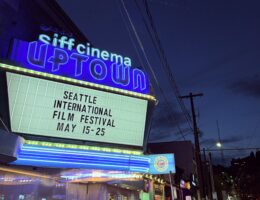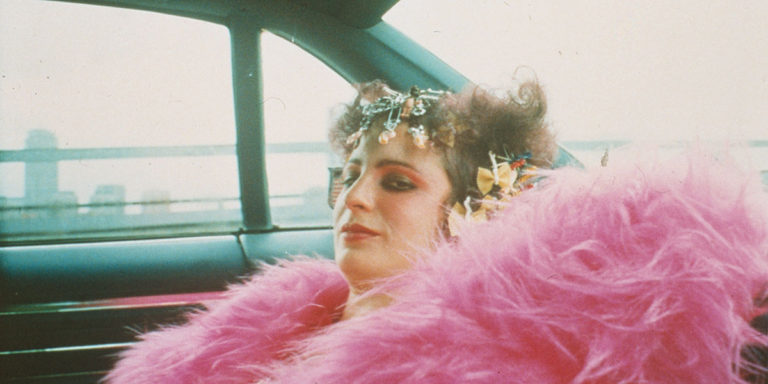All the Beauty and the Bloodshed (2022 | USA | 117 minutes | Laura Poitras)
Although Laura Poitras’s All The Beauty and the Bloodshed puts decades of Nan Goldin’s photography onto the big screen, neither the film nor its subject are stuck in the past.
Goldin’s pioneering slideshows, which captured the lived experiences of marginalized people in her social milieu of the early 1970s with vibrant candor, provide a loose structure for the film. Having left home in her early teens in the wake of her sister’s suicide, Nan found a her voice with a camera and forged her identity among the city’s queer communities. Had the film done nothing more than bring this slice of art history to a new audience, it would have been a success.
Goldin broke into an art world where photography was largely staid vertical black and white images, in an era where not everyone had the machinery of self-constructed imagery and self-promotion in their pockets. From the present vantage of an internet saturated with carefully curated identity as currency of the realm, her depiction of youth culture — especially the interrogation of so-called sexual depravity — shot and curated in collaboration with her subjects was in and of itself a revolutionary angle.
Along with these photographs and retrospectives, Poitras interweaves audio from over a year of deeply personal and revealing conversations with Goldin. She reflects on the difference between stories we tell and the tactile nature of memory, how one is clean and the other has smells and lasting effects. There are frank discussions of mental health and familial insufficiency, of artistic awakenings, and the friendships and loves that sustained her life. Again, had this been the whole film, it would have been sufficient.
But stasis or pure reflection is not how either Poitras or Goldin have ever worked. The film takes flight in cementing the interconnections between Goldin’s life, her willingness to stand for artistic freedom during the AIDS crisis, the lessons of effecting impolite change as part of the ACT-UP movement in the face of indifference to mass deaths as the foundation of her present day activism amid the deadly opioid epidemic. Grounded in her personal experience with addiction to prescription painkillers after a surgery, she and her PAIN organization have taken stands against the “artwashing” that the Sackler family has done through donations to major art institutions to blunt their complicity in creating the opioid crisis through Purdue Pharma’s deceitful marketing of their blockbuster drug OxyContin. Leading “die-ins” performances with pill bottles, prescription pads, and banners at places like the Met, Guggenheim, and LouvreGoldin leverages her art-world credibility (she’s in the permanent collection of each) to protest the continued use of this family’s name in high-society despite the hundreds of thousands of addiction related deaths stemming from their products.
The masterful linking of today’s activism, spanning protest, lawsuits, legislation, and devastating testimony with the artist’s own complicated biography makes for a stunning continuum of creativity, personal revelation, and vital social change. One of the most vibrant documentaries of the season and a shot at a second Oscar for Poitras (who just brought home the Golden Lion from Venice).
A previous version of this review ran when All the Beauty and the Bloodshed had its North American premiere at the Toronto International Film Festival; it opens this weekend in local theaters including SIFF Cinema Uptown.
Lead image courtesy Participant Media.



